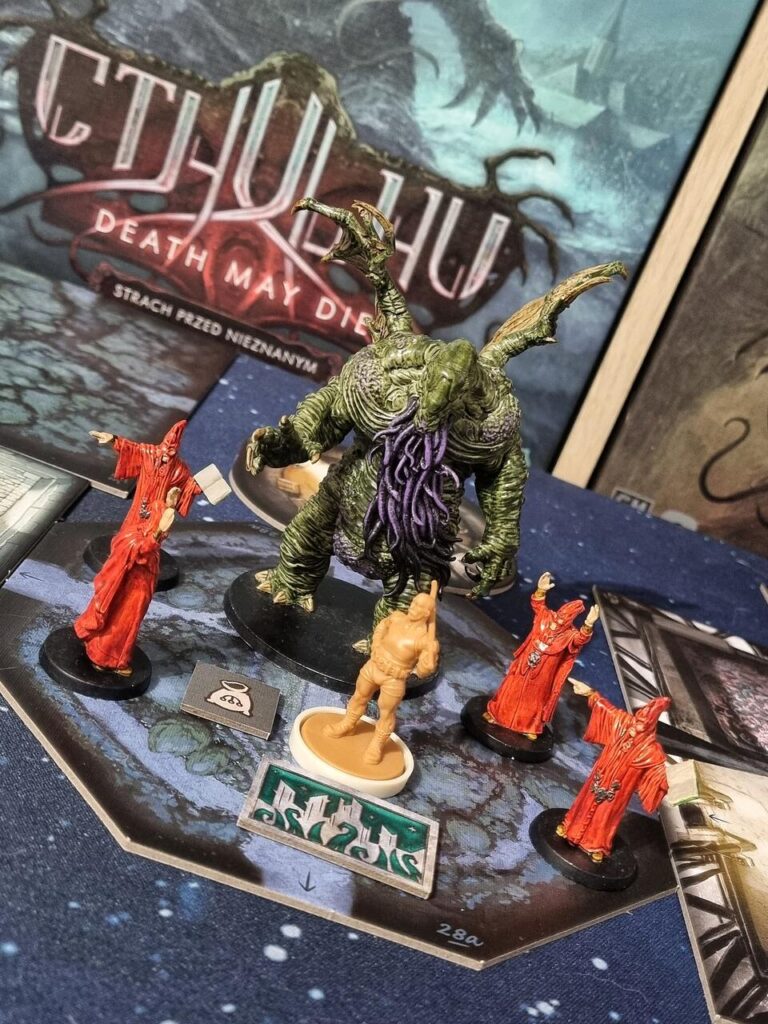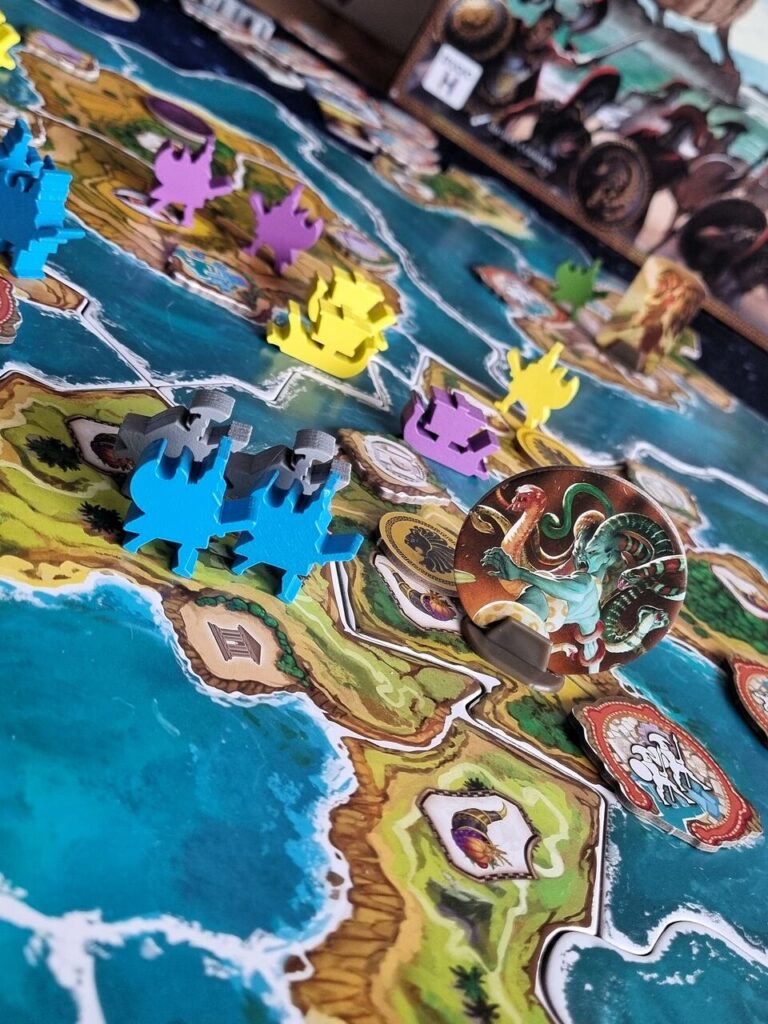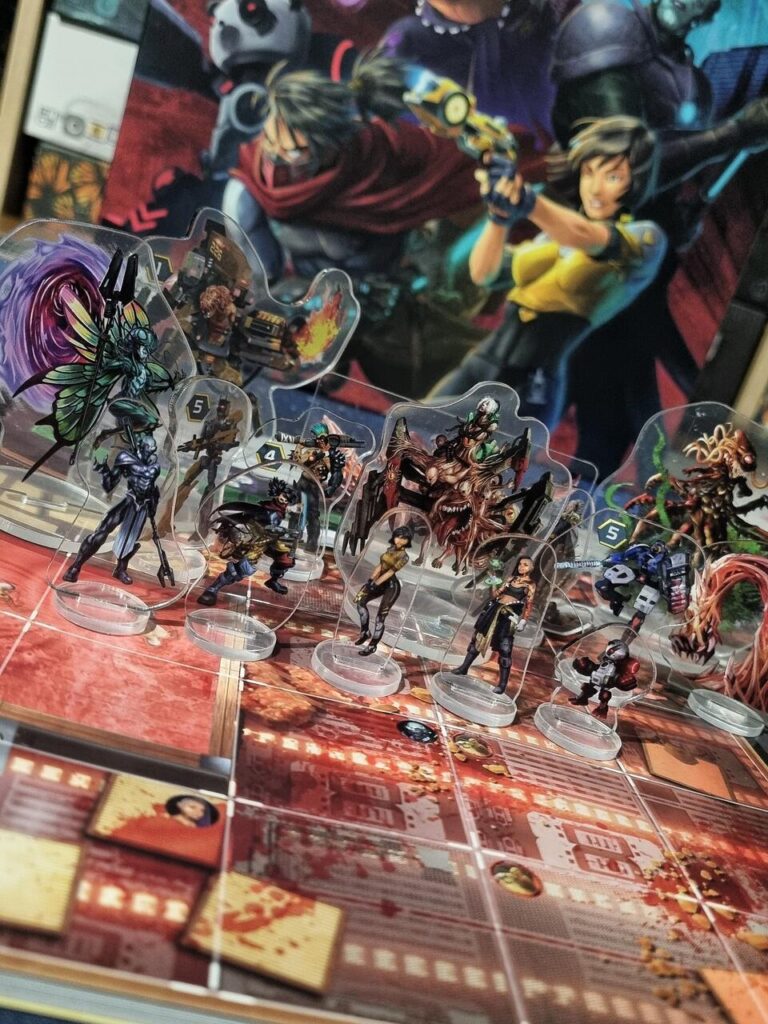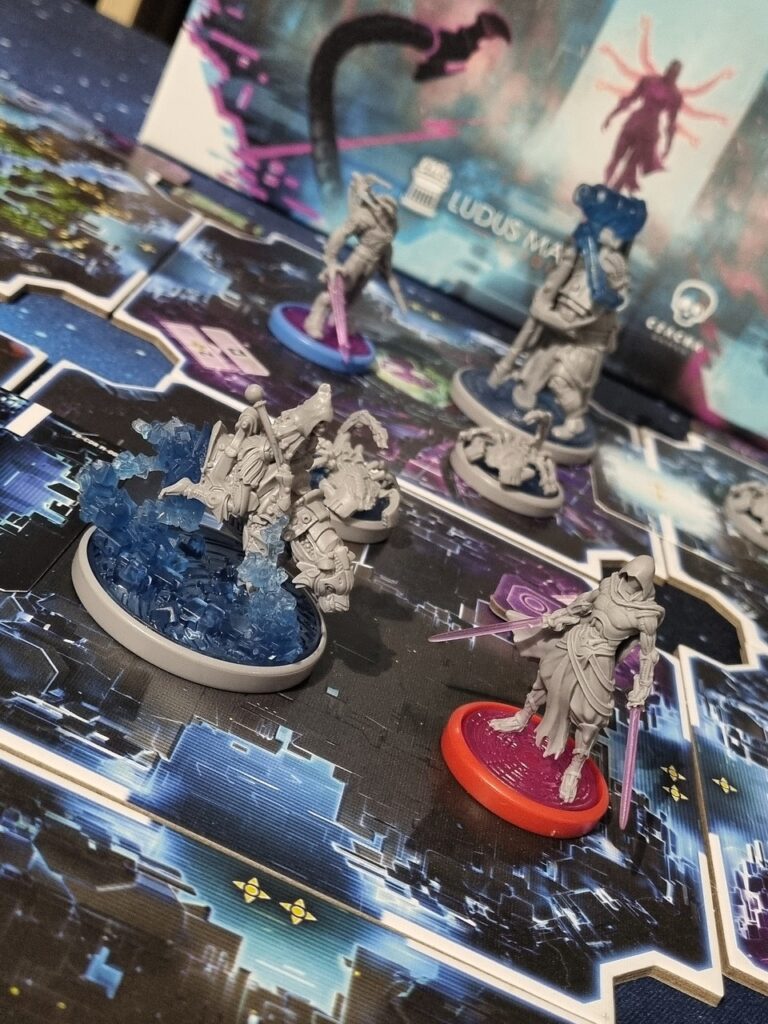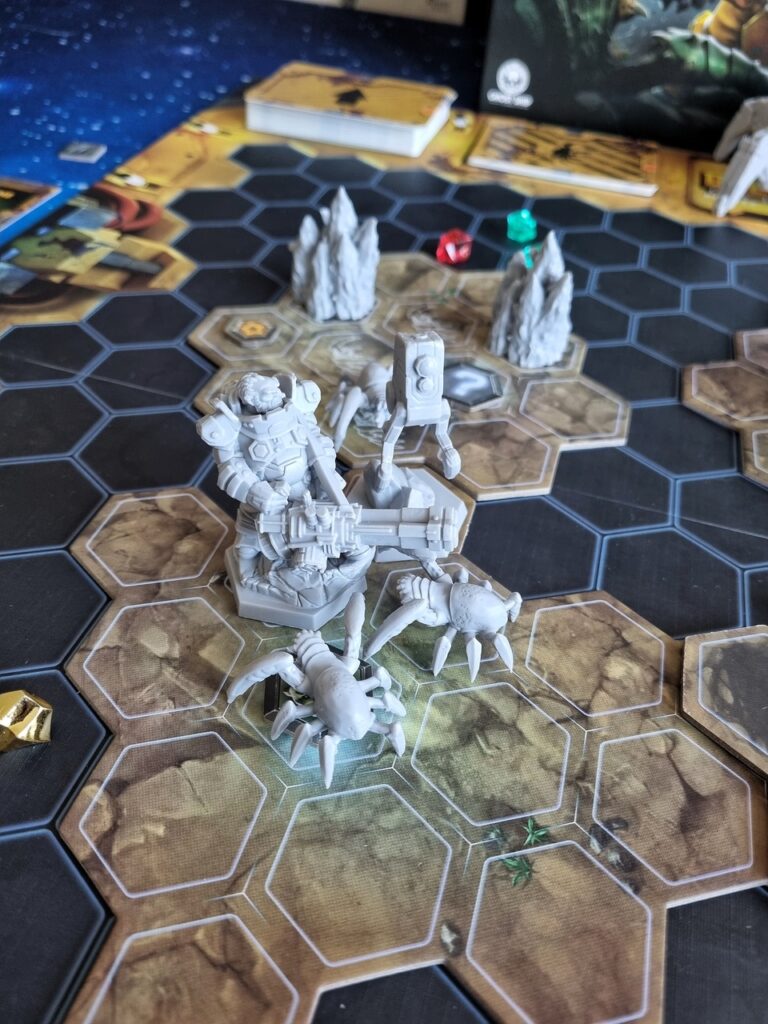Dorfromantik Duel
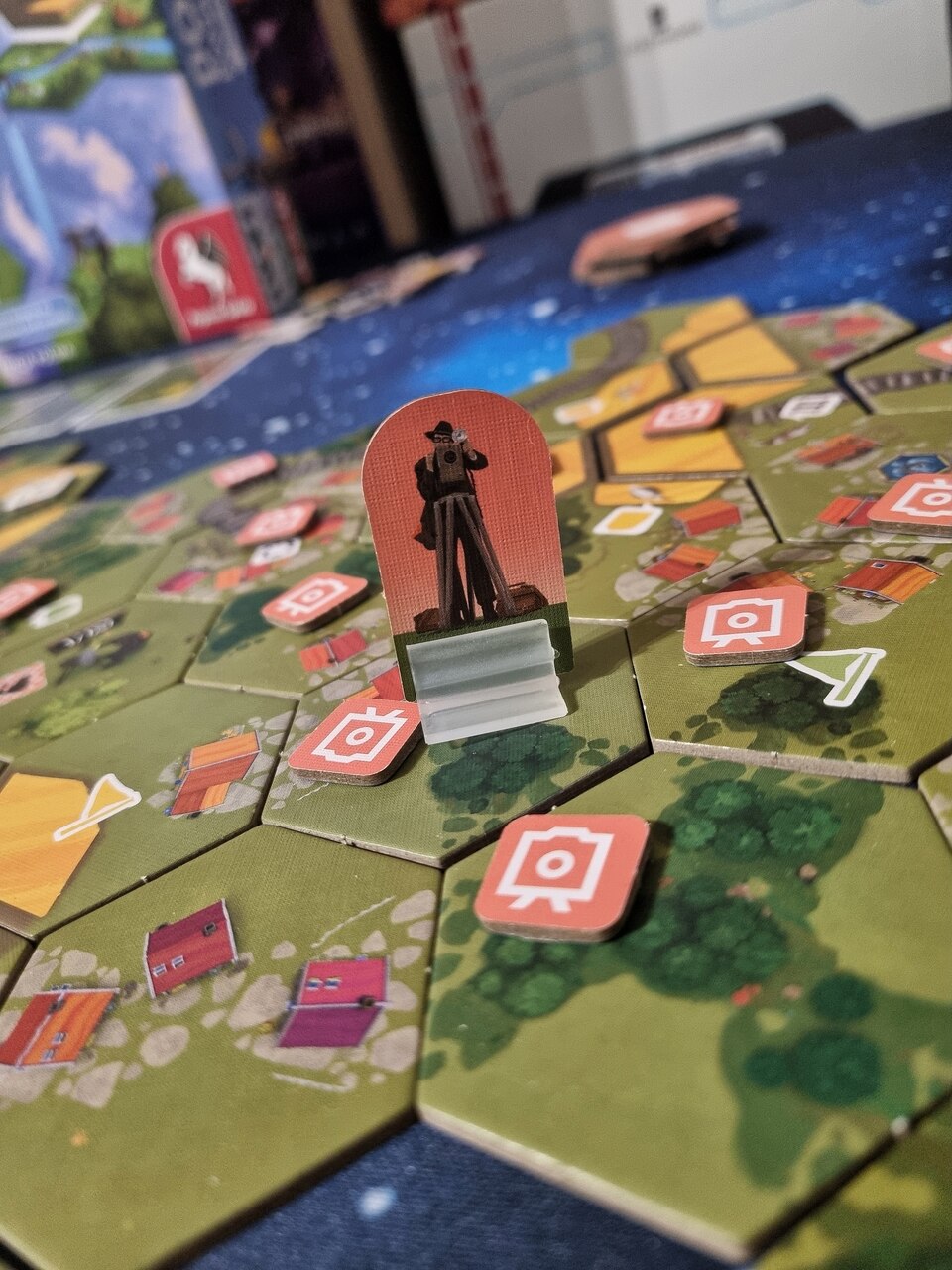
Dorfromantik is supposedly one of the most romantic games ever. It’s also the only game where my wife „Alfa playered” me and snatched a tile right out of my hand while showing me how I should arrange it. That’s why I’m inviting you to a duel version of this game, where you can’t do an action like the one above…, can you?
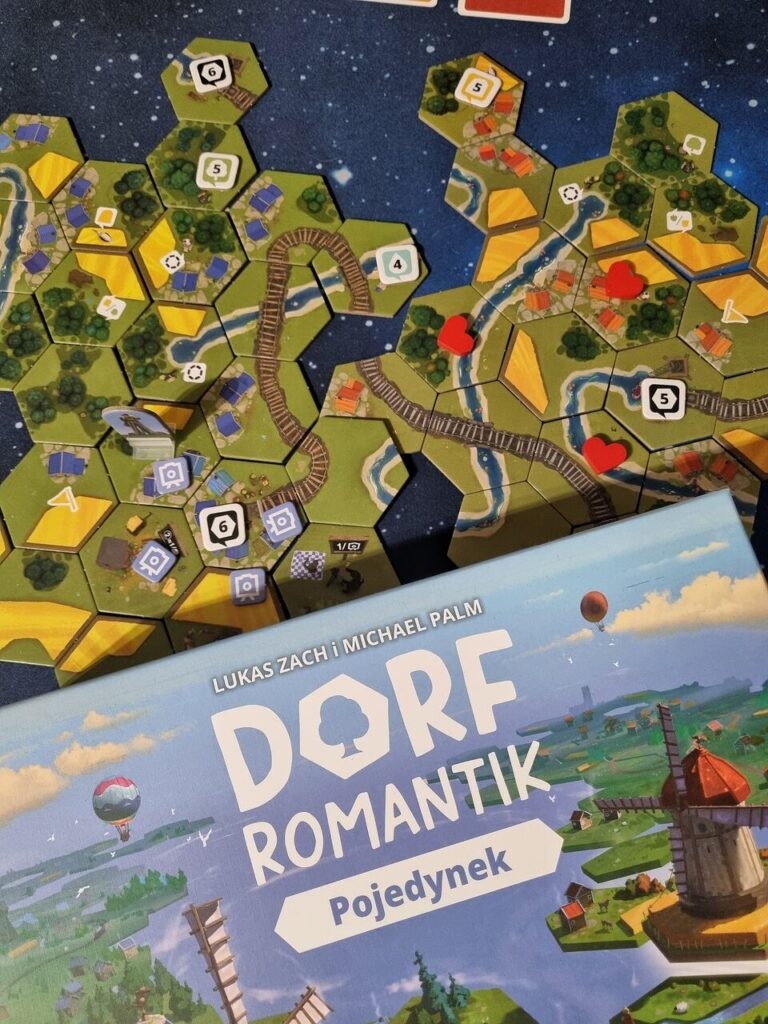
Dorfromantik Duel is essentially about the same thing as good old Dorf. You still draw tiles, lay them and try to fulfil various tasks to score as many points as possible. Then you draw another tile, complete another objective, and so on. In the Duel version, there can only be one winner.
Searching for a tile in a tile pile
Let me start straight away with something I don’t like about this game. It’s about the way we draw tiles. Each player has exactly the same pool of tiles. One of us will be the picker, who will play with the tiles covered up, and the other player will be the finder, who will play with the tiles pounded in the middle of the table and arranged in some sort of ‘order’. My whole outrage is that when the draw player draws a tile the seeker has to find exactly the same one in his pool of 66 tiles. This almost diabolical number is divided into 27 task tiles and 39 landscapes.
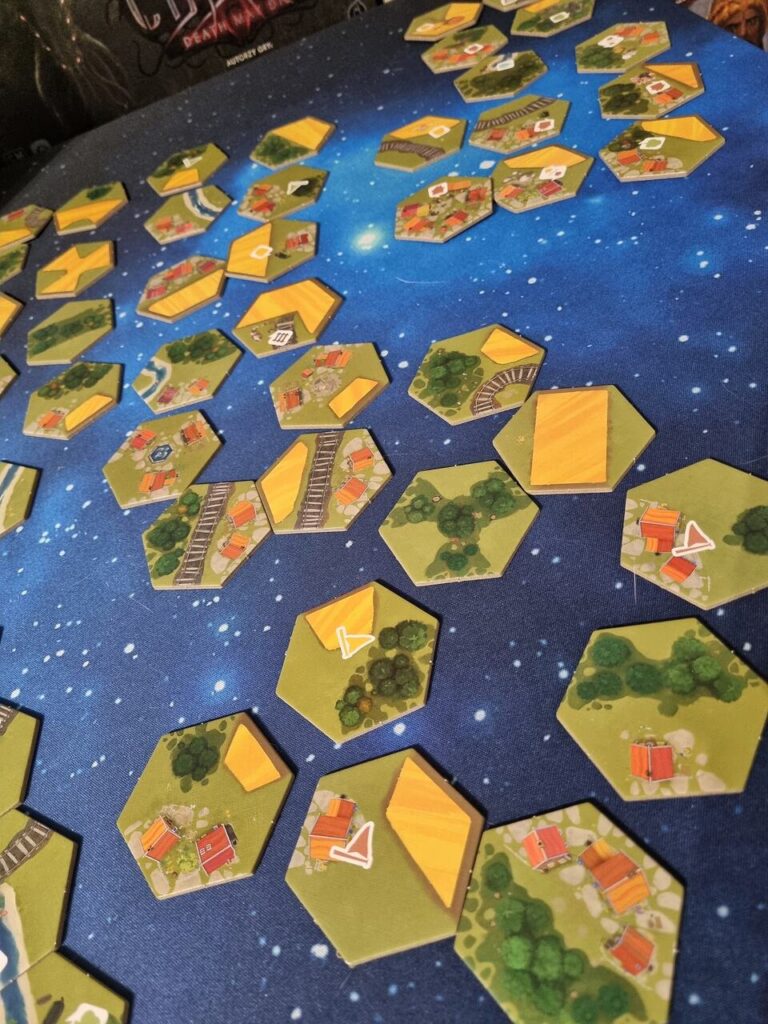
It may not seem like such a terrible thing, but it slows down our gameplay considerably. The situation I mentioned in the introduction does arise, but this time we’re tearing out tiles to see if we’ve matched exactly the same one. Fortunately, most of the tiles contain some sort of special mark. It could be a sparrow scarecrow, a stork or a warm blanket. However, we made mistakes because the layout of the elements on them is quite similar to each other.
In fact, if everyone drew their own tiles then there wouldn’t be such a problem. We even played this way once and had a lot more fun than with the standard game.
Something extra
We have played a few times and found that something is missing here. Therefore, it’s time to up the ante and raise the level of competition. In Dorfromantik Duel we have 2 additional modules available.
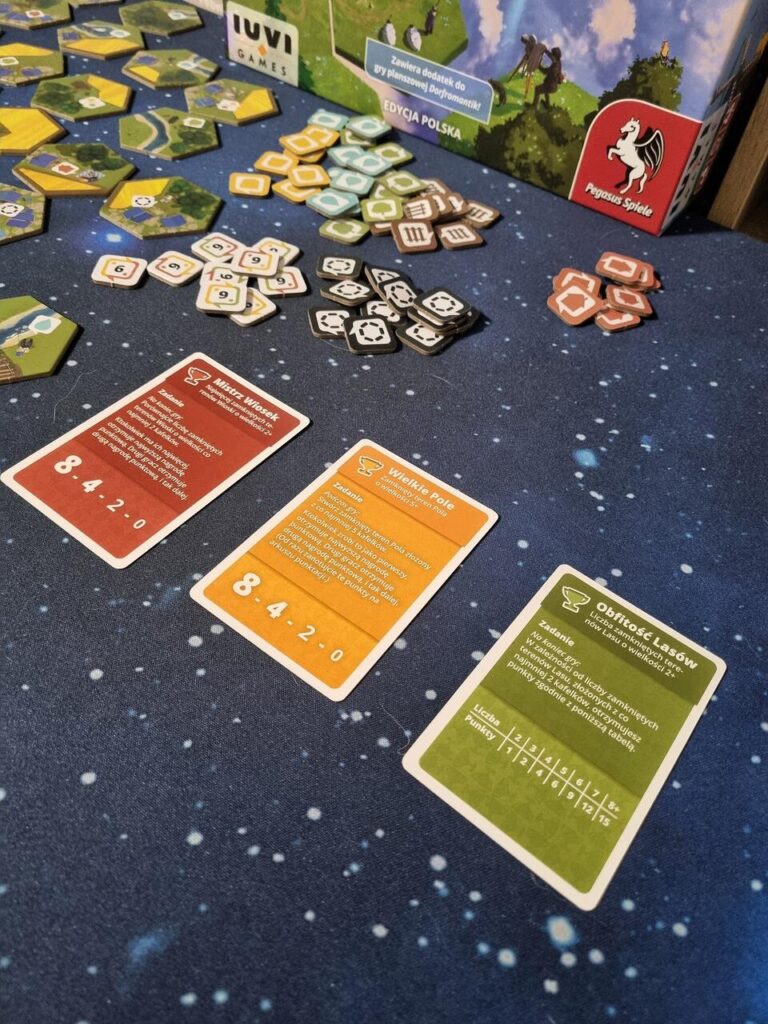
The first introduces task cards for each landscape. As a rule, this is to have as much of some terrain as possible at the end of the game. However, my favourite is to close a terrain of 5 elements as quickly as possible. This introduces such an element of a race, which definitely increased our involvement in the gameplay.
Interesting curiosities
The second module available is curiosities. We acquire them when we complete a certain number of tasks. They provide us with a bit of that asymmetry and kick that this game needed. I can’t imagine playing without them.
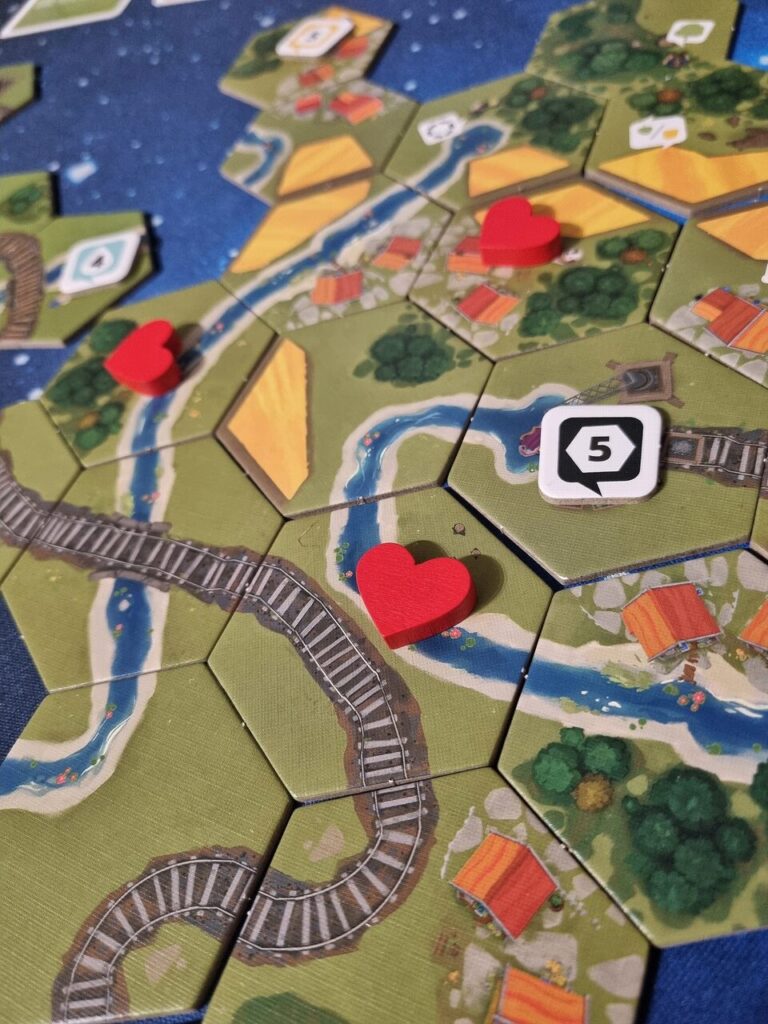
When we choose hearts then we can place a heart on a given tile. At the end of the game we gain points for any terrain around that tile that matches terrain with it. Simple.
The School, the Granary and the Old Oak are special tiles that we will place in our domains. At the end of the game we score for a certain type of terrain within 2 of these tiles. If another player has chosen a tile first, the second player cannot take the same tile. This is the asymmetry I wrote about. It’s a subtle one, but at least it’s there.

I left the best for last. When we choose a photographer we place him with a special tile. When we add another tile to this one, we can move the photographer onto it and place a camera token there. Each such token provides us with 1 point at the end of the game. By walking our photographer all the time it provides such a cool dynamic to the game. Something that was definitely needed in Dorf. We hope there will be more highlights like this in the future.
Quality and components
Colour-wise I really like this game. I also love the fact that most of the tiles have a personalised feature on them. My attention, however, must be directed to the insert, which segregates the tiles by type, but unfortunately has not been very well thought out. Because, unfortunately, some of them do not fit and have to be squeezed into the last slot. This is a bit of a shame.
Summary
There has been a lot of complaining about the main mechanism for finding the same tiles, now it’s time to relax. That’s what Dorfromantik is all about. You draw tiles, watch your land grow, and try to complete as many tasks as possible. All in the blissful atmosphere of a tile game perfect for a Sunday afternoon.
Final verdict: Relaxing gameplay, as long as I don’t have to search for tiles.
Pros
- Relaxing building
- Simple rules
- Fast gameplay
- Additional modules
- Photographer
Cons
- Too small insert
- Searching for tiles
- Enormous table presence
[Game provided by IUVI Games]


